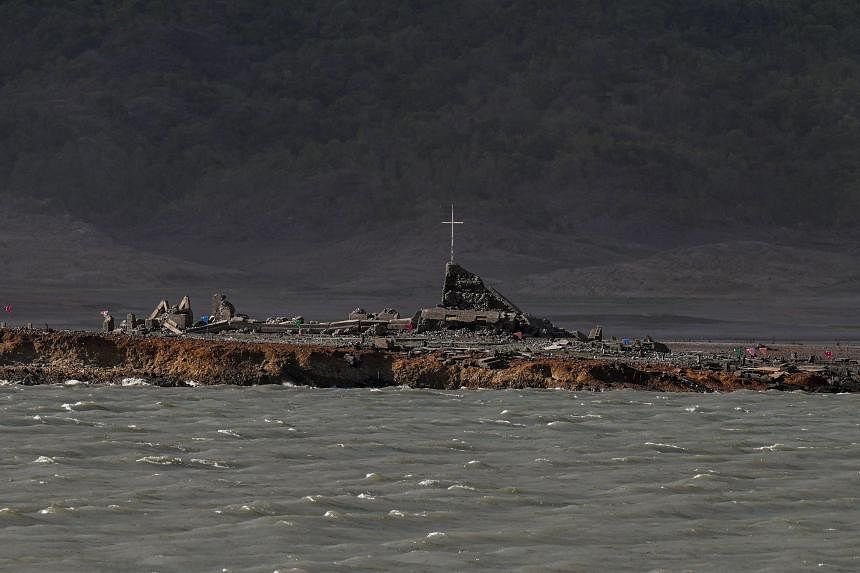
Image by Yanguang Lan.
It’s never been so bad.
The Great Barrier Reef, which is one of nature’s most iconic mosaics of biodiversity, is on the ropes because of extreme global warming. Coral bleaching at the World Heritage-listed reef is “experiencing its worst mass bleaching event on record.” (Source: Australia’s Great Barrier Reef is ‘Transforming’ from Repeated Coral Bleaching, Nature, April 19, 2024)
Subtitle to the article: “The coral reef is currently experiencing its worst mass bleaching event on record — warming waters brought on by climate change are to blame.”
This is deadly serious business and could spin out of control unless, and until, according to marine biologist Terry Hughes, James Cook University, Australia (world class marine research): “The solution to the Great Barrier Reef’s bleaching problem is clear. Reduce greenhouse gas emissions. Full stop.”
The good news/bad news is coral can recover from bleaching if the stress causing the bleaching diminishes; however, the entire globe is fast approaching non-stop repeating frequency of unchecked severity, meaning coral mortality is at stake like never before; consequences would be devastating. Coral mortality is on the line. Then, there is no recovery.
Coral reefs are called “the rainforests of the sea” and host 25% of all ocean species. Hard Coral, the building blocks of reefs, can live for more than 4,000 years.
Greenhouse gas emissions that ultimately cause bleaching are on track to quadruple via oil and gas production. According to Global Energy Monitor, oil and gas companies plan on quadrupling output by 2030. And according to Carbon Tracker (CT), every oil and gas company has flunked the CT grading system by not coming close to aligning with the central goals of a severely compromised Paris 2015 climate agreement that insists upon nation/states cutting greenhouse gas emissions, like CO2, sharply by 2030 to achieve Net Zero emissions by 2050, which is as dead as a doornail ever since fossil fuel companies took control of the International Panel on Climate Change, IPCC, thus orchestrating a grand PR scheme “we’re onside with climate science” which is really truly a grand deception, e.g., the leader of Saudi Aramco at a recent oil conference in Texas said the world should “abandon the fantasy of phasing out oil and gas.”
Meanwhile, unprecedented bleaching is very similar to ongoing degradation of the Amazon Rainforest that’s caused by drought sequences occurring too severely, too often, another casualty of global warming. According to NASA: “The rainforest doesn’t react like it used to. It does not have enough time between droughts to heal itself and regrow. Throughout all recorded history, this has never been witnessed.” (Source: Amazon Rainforest is Drying Out. How Much More Abuse Can It Take? DownToEarth).
Humanity is in the midst of massive pre-disaster warnings of ecosystem crashing events on a global scale never witnessed before (check-out geophysicist Bill McGuire’s warning at the end, herein), but it happens where nobody lives and thus does not impact society enough, not yet, to take charge to do something constructive. Thus, the bane of modern-day society’s artificial environments, i.e., concrete, glass, asphalt, steel, fabricated wood, aluminum, chemical textiles, all not connected to nature. People do not connect with impending danger found throughout the planet in nature’s wilderness. They do not live where nature carries a burden that highlights human ignorance.
According to geophysicist Bill McGuire, it’s time to face up to the harsh reality that the global warming curse is attacking/degrading the planet’s most sacred, most iconic natural ecosystems. Portions of the Amazon Rainforest are now emitting CO2 in competition with fossil fuels at the same time as severe bleaching mortality, like the Grim Reaper, stares down at the Great Barrier Reef.
The extraordinary bleaching event is global; it’s not only the Great Barrier Reef; it’s everywhere on the planet and deeply concerning, according to the National Oceanic and Atmospheric Administration, NOAA: “From February 2023 to April 2024, significant coral bleaching has been documented in both the Northern and Southern Hemispheres of each major ocean basin,” according to Derek Manzello, Ph.D., NOAA CRW coordinator. (Source: NOAA Confirms 4th Global Coral Bleaching Event, NOAA.gov, April 15, 2024.
Coral bleaching, when stressed, expels colorful resident zooxanthellae. According to a report released on 17 April by the Great Barrier Reef Marine Park Authority, the Australian government’s reef management agency, the reef is experiencing its worst mass bleaching event on record. The Reef Snapshot claims three-quarters of the entire reef is showing signs of bleaching and nearly 40 percent is showing high or extreme bleaching. The report is based on aerial surveys of 1,080 of the Great Barrier Reef’s estimated 3,000 individual reefs.
“We’ve never seen this level of heat stress across all three regions of the Great Barrier Reef,” according to Brisbane-based marine biologist Lissa Schindler, the Australian Marine Conservation Society, Ibid.
The Great Barrier Reef is experiencing its 5th mass bleaching event in only 8 years. It’s now increasing in frequency. Over the past 6 years, bleaching has occurred every other year, 2020, 2022, 2024 with regularity. According to Terry Hughes of James Cook University, there’s not enough time for the reef to recover. This is getting deadly serious at the same time as fossil fuel companies crank up CO2 emissions by a factor of four.
All of this is happening as global sea surface temperatures, the main protagonist, broke records in 2023: “There have been very high temperatures driven by climate change all across the world, and there has been coral bleaching in many other countries,” according to environmental scientist Roger Beeden, chief scientist for the Great Barrier Reef Marine Park Authority.
Several respondents to articles like this have commented that oil is woven into the fabric of neoliberal capitalism so tightly that it’s hard to shake loose but not impossible.
But how much longer can rainforests and coral reefs hold on?
Of more than passing interests: According to a recent Futurism article: Scientist Terrified by How the Climate is Falling Apart d/d March 9, 2024: “We’re staring down the barrel of an impending climate crisis, and according to University College London geophysical and climate hazards professor Bill McGuire: ‘We should be absolutely terrified of what’s still to come.”
In short, world leadership doesn’t know which way to turn next, like a deer in the headlights, meaning it’s incumbent upon climate scientists to tell it like it is to arouse the public: “Scientists are forced to ‘rouse the public’ to try and force through the enormous changes required to curb global heating… While those of us working in the climate science field know the true picture, and understand the implications for our world, most others do not. And this is a problem — a big one. That kind of gap in our knowledge could prove fatal, allowing narratives of climate denial to flourish.” (McGuire)
According to McGuire, “fear is very much part of the equation, instead of relying on sanitized versions of the truth, informing the public of the cold hard facts could be transformative.”




